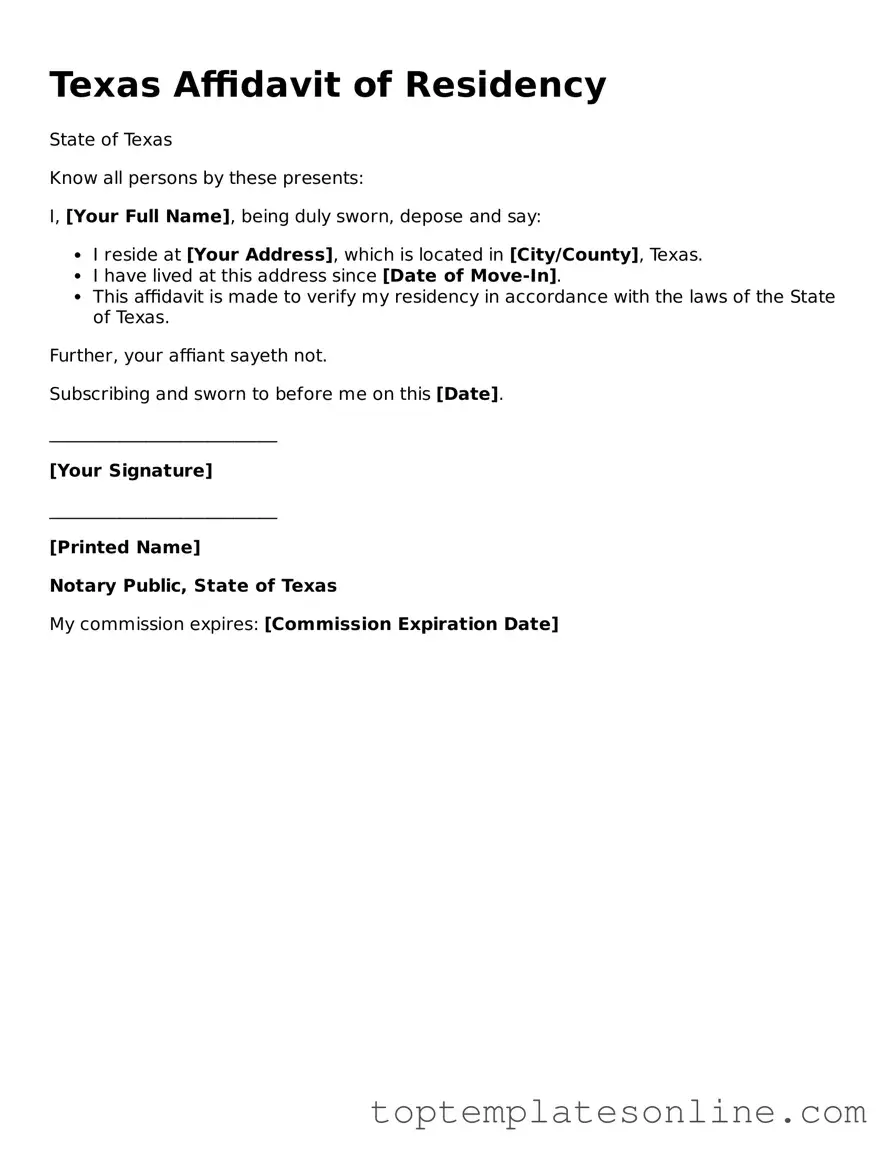Blank Affidavit of Residency Template for Texas State
The Texas Affidavit of Residency form serves as a legal document that verifies an individual’s residence in Texas, often utilized for various administrative purposes. This form is particularly important for those seeking to establish residency for voting, education, or other state-related benefits. Understanding its significance can help individuals navigate the requirements and implications of residency in Texas.
Customize Affidavit of Residency Here
